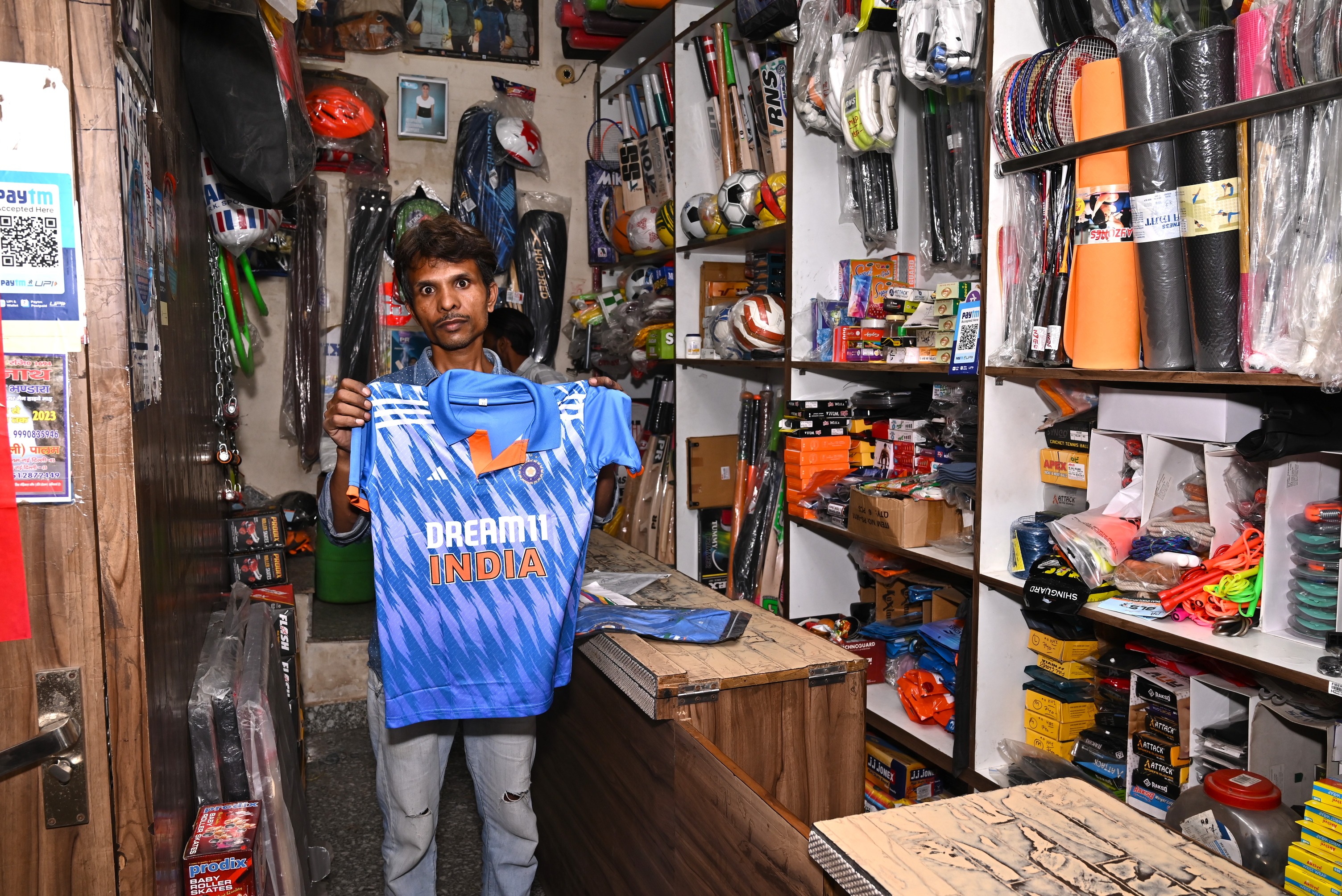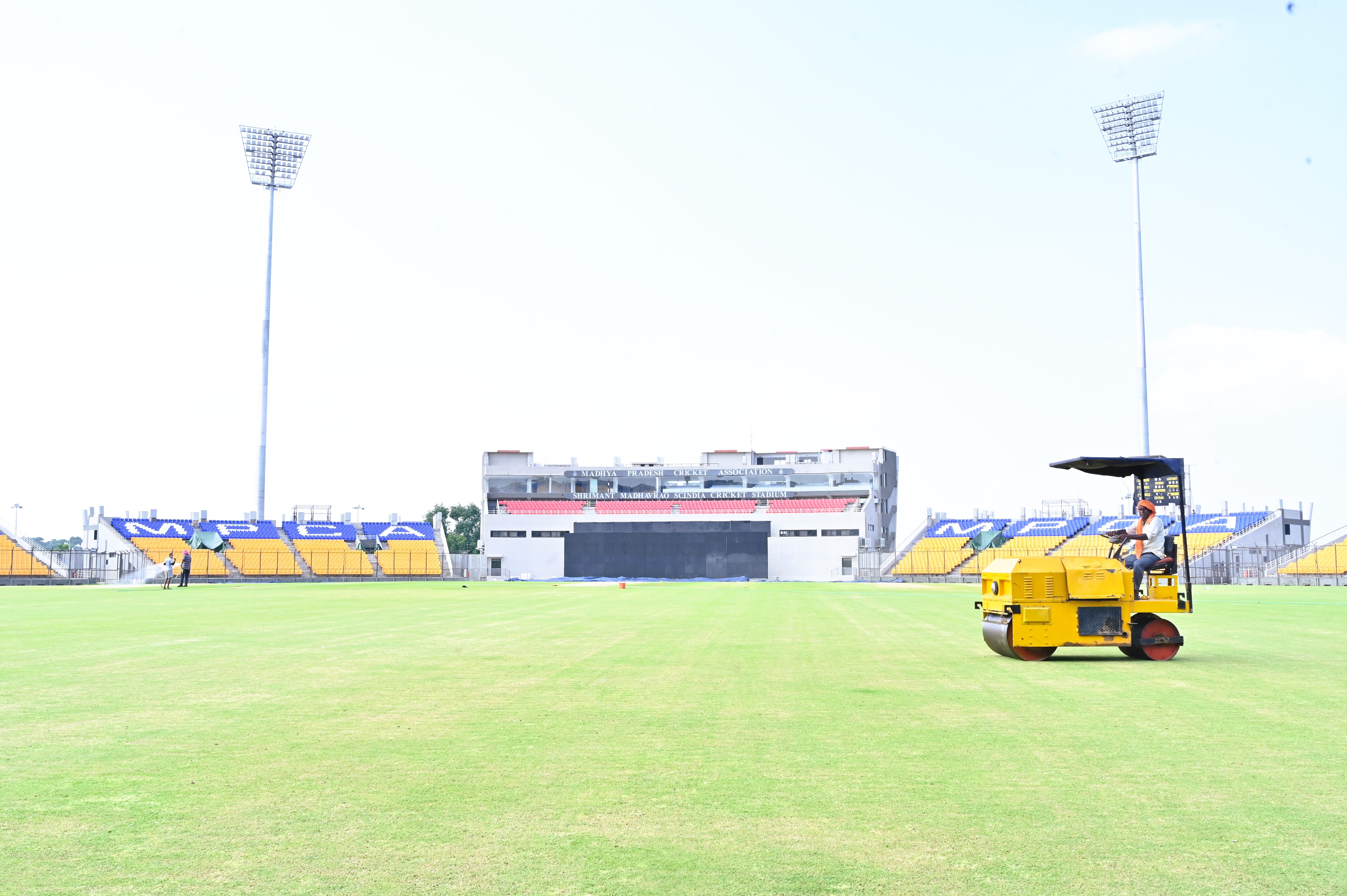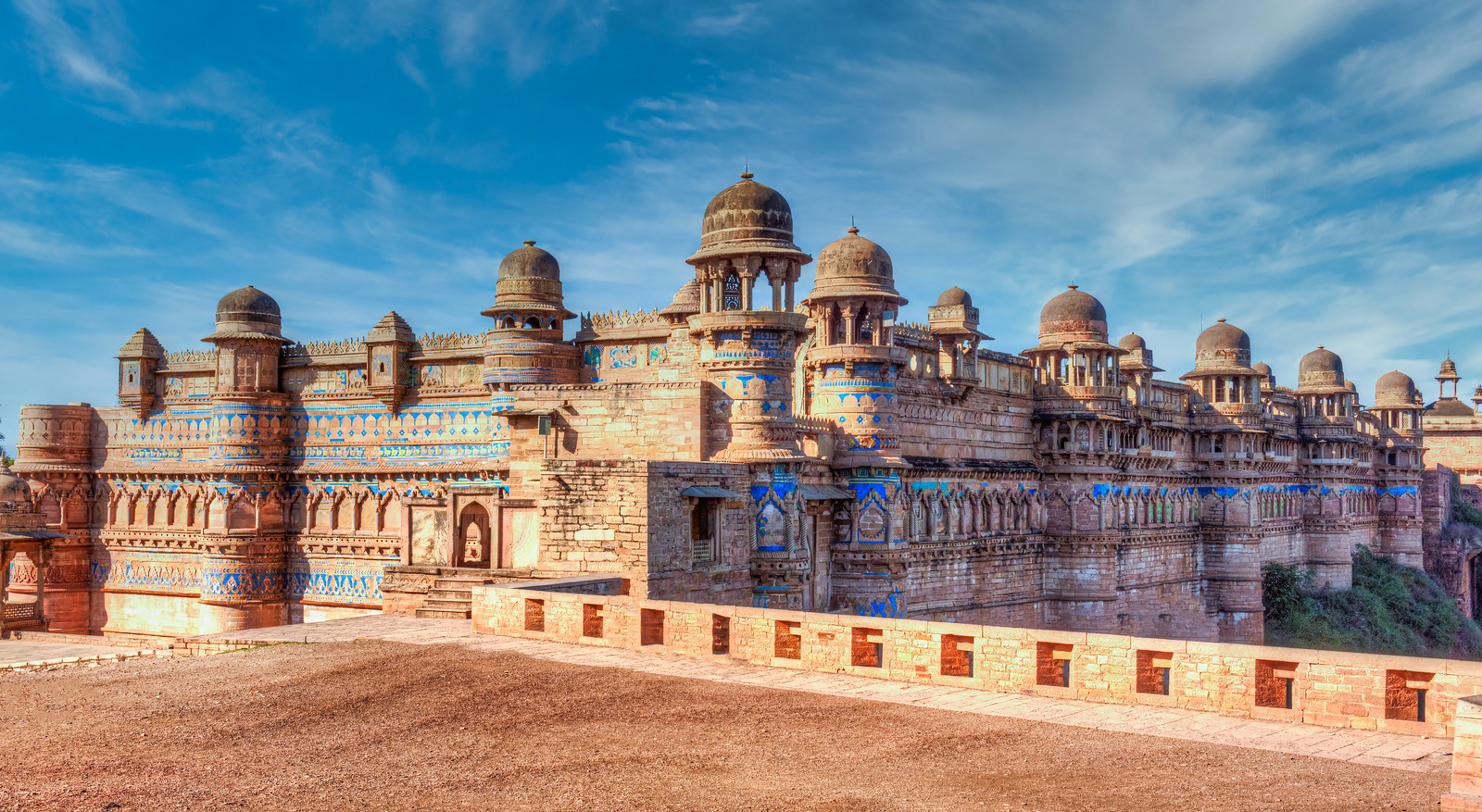Nishant Singh, the shopkeeper at Vijay Sports in the congested Pathankar Bazaar of Gwalior, is pleasantly surprised at my suggestion of opening a pop-up store on the way to Madhavrao Scindia Cricket Stadium for selling jerseys, caps and other fan merchandise. His father migrated from Uttar Pradesh with a single suitcase, the family lore goes, and entered the sports equipment trade in 1970. Although Nishant has placed orders of replica t-shirts with Jalandhar-based manufacturers to cater to the demand come the first T20I between India and Bangladesh, it didn’t strike him that capturing the crowd headed to the new venue made more business sense than expecting spectators to come shopping in the heart of the city.
His lack of foresight is understandable, for the fact that Gwalior is hosting an international cricket match is yet to sink in for the natives, after all it’s been 14 years since the last – the epoch-making ODI at Captain Roop Singh Stadium where Sachin Tendulkar scored the first-ever double century in the format.

The area in which Gwalior is situated, the northern part of Madhya Pradesh in central India, was the core of Gwalior princely state, a domain of the Scindia family, a Maratha dynasty that controlled much of northwestern India during the second half of the 18th century. Prominent members of the family in more recent times have included the politicians Vasundhara Raje, Jyotiraditya Scindia and former BCCI President Madhavrao Scindia, who is credited for Gwalior’s rich cricketing history by Rajendre Tembe, the first player from the city to feature in the Ranji Trophy.
‘’He invited legends like Sunil Gavaskar, Erapalli Prasanna, Gundappa Vishwanath, Kapil Dev, Madan Lal, Mohinder Amarnath and Bishan Singh Bedi to play in Gwalior,’’ Tembe reminisces with great fondness, his excitement so palpable that my questions stand no chance of completion against his impassioned recollection of the heydays.
‘’Watching these maestros from up close contributed immensely to my game and also created a vibrant cricketing culture overall in the 70s when there were very limited facilities in Gwalior. We used to play on bouncy matting wickets and often took body blows as there were no thigh pads or helmets available, par Scindia sahab ko junoon tha. Unhone lagbhag akele hi Gwalior ki cricket ko chamka diya’’ (Madhavrao Scindia was so passionate about cricket that he almost single-handedly lifted Gwalior’s cricket out of the dungeon).
The Roop Singh Stadium was originally a hockey stadium before it was converted into a cricket venue in the 1980s. Floodlights were installed in preparation for the 1996 World Cup fixture between India and West Indies. The stadium hosted 12 ODI matches, with the rearmost being the crown jewel as Tendulkar went where no man had gone before. He ushered India to 401, facing 147 balls for his 25 fours, 3 sixes, 56 singles and 13 twos, several of them adroitly scampered. Off his full quota, Dale Steyn leaked 89.
Sachin kicked off the magnum opus with flowing cover drives and neat clips off his pads, and even though he did improvise here and there the freedom his impeccable technique gave him killed the need for unorthodoxy. Aged 37, he did cramp up after crossing 150 but continued without a runner. There were no chances offered, making his epic absolutely flawless.
It begs the question why the Roop Singh Stadium never hosted an international fixture again. After all, its name had been etched into the annals of history, a launchpad for bagging a meatier slice of the pie as far as the Indian calendar was concerned. Much to Gwalior’s chagrin, the freshly iconic venue met a double whammy.
‘’The stadium was owned by the local municipal body and they would green-light festival celebrations over there, the littering and deterioration caused by which made the field of play unfit for top-flight cricket,’’ Tembe explains. According to Prashant Mehta, the president of Gwalior Division Cricket Association, ICC’s rules and regulations for hosting an international match were growing complex and the Roop Singh Stadium simply wasn’t able to keep pace.’’
The fading out of the stadium robbed Gwalior’s young generation of exposure. For most of the kids training at the Tansen Cricket Academy, this will be their first experience of watching international cricket in front of their eyes. ‘’Indore is 500kms away so I couldn’t attend the matches at the Holkar Stadium because of the logistical challenges. It’s expensive to travel, and I can’t afford to miss training,’’ laments all-rounder Medhansh Gour.
Vaishnavi Sharma, a left-arm spinner who earned the BCCI best woman cricketer award in the junior domestic circuit in 2022-23 season and is eyeing a berth in India’s U19 T20 World Cup squad, said ‘’I’m super excited as international cricket is happening in our city after so long. I’ll learn a great deal by observing the world’s finest players from close quarters. How they construct their innings or set up a batter, how the boundary riders cut down the angles, how elite athletes approach a pressure situation and conduct themselves on and off the ground.’’
‘’Watching on television, you tend to miss the intricacies like how the field switches over for a right-left batting combination or how the captain is making minute fielding adjustments to optimize wicket-taking and run-saving chances because the broadcast doesn’t give a complete overview. From the stands you have an excellent vantage point and can really pick up a lot more,’’ Vaishnavi highlights.

That is precisely why then Indian captain Virat Kohli’s recommendation to earmark five Test venues across the country hurts the multilateral growth of the sport in India. When quality cricket comes rolling to a town, it serves as a tool of education and a vehicle of inspiration, not just for cricketers but also for their coaches and family members who get acquainted with the level of effort and skill required to perform at the highest level and push the proteges to train efficiently.
GDCA has issued 1500 student-concession tickets priced at INR 750, and the youngsters have taken advantage of the discount given the quota has been exhausted. Sanjay Ahuja, secretary of GDCA, feels that club cricket in Gwalior ought to be strengthened, and the access players will now have to state-of-the-art facilities will usher the division to heights that Indore and Bhopal have soared to in Madhya Pradesh’s cricketing arena.
Having hosted the well-attended Madhya Pradesh T20 League, the Madhavrao Scindia Cricket Stadium has been allotted 30 matches across the Womens U15 One Day Trophy and Boys U16 Vijay Merchant Trophy later this year.
‘’It took 14 years from the acquisition of land to construction to reaching this stage where the stadium is completely ready. It’s a dream come true.’’ Mehta elucidates. ‘’This is Phase-1, we’ll be taking up the capacity from the present 30,000 to 50,000 in Phase-2. We are aware that rain in the past week caused water logging inside the stadium but we have managed to bring the situation under control and have faith in the drainage system should the weather play spoilsport on match day.’’
Hosting an international cricket match is a matter of pride for any city, but more so for the up-and-coming ones as a good show ensures a steady pipeline of games moving forward which is beneficial for the local hospitality industry. To enhance the experience of the Indian and Bangladeshi contingents, Mehta has thought about organizing a trip to the Gwalior fort, hailed as the “pearl amongst the fortresses of Hind” by Mughal Emperor Babur for its impregnability and magnificence.

Gwalior is widely regarded as the birthplace of Tansen, one of the greatest musicians and composers in Indian history. In fact, Gwalior Gharana is the oldest and most influential school of Hindustani classical music.
The homecoming of cricket has struck a chord. About 23,000 tickets, running the gamut from the lowest to the highest price point, were sold out within a few hours on 19th September at Paytm Insider. Nishant better execute on my brainwave and reserve a 10% commission from his prospectively jumbo sales.
